For a relatively short period in modern history, toys cast from iron were the most popular children’s playthings around. The quality and skill of the makers’ craftsmanship is evident in genuinely antique cast iron toys. Combined with the relative rarity of true originals, today these toys are some of the most sought-after collectors items at auction.
In this article, we’ll examine the history of cast iron toys, as well as their potential value, how to determine origin, and tips on effective cast iron toy maintenance.
Table of Contents
The History of Cast Iron Toys
Iron casting is one of the most ancient forms of metallurgy, originating in China in the 5th century BCE where it was used to produce pots and other cookware. By the 15th century CE, the art of pouring iron (or a stronger steel-iron alloy) into casts made of forging sand to mass-produce tools, weapons (such as cannons and cannon balls) and trinkets was introduced to Europe, and not long after, to the Americas.
In the 19th century, innovations in technology and the availability of fuel brought about the Industrial Revolution, and with it came an explosion in the manufacture of toys via the cast iron process (which were also America’s response to the popularity of more-expensive tin toys produced in Europe). These toys required just one original maker’s mold in order to be produced in the thousands. They were then painted, fitted with rubber accessories, and marketed to children around the world.
There were scores of high-quality cast iron toy manufacturers in the USA and further afield, but the most prominent makers of such antiques were:
- Hubley Manufacturing Company of Lancaster in Pennsylvania
- Dent Hardware Company, also in Pennsylvania
- Arcade Manufacturing Company in Illinois
- C. Williams Company of Ohio
- Kenton Lock Manufacturing Company based in Ohio
Almost any type of toys could be produced from cast iron molds, their complexity and quality depending on the original design, the skill of the metal workers, and the level of quality checks carried out on end products. As has been the case throughout history, the most popular cast iron toys mimicked the machines and vehicles belonging to the parents of the children for whom the toys were gifts. As such, popular cast iron toys included:
- Motorcycles
- Fire Trucks
- Automobiles
- Cast Iron Horse and Carriages
- Circus Wagons
- Ice Wagons
- and more…
Unfortunately, the production of cast iron toys fell out of favor in the Great Depression of the 1920s and ’30s. During the war years of WWII, calls for donations of metal for the production of arms and armaments then greatly reduced the remaining numbers of cast iron toys even further. Today, old cast iron toys in their original condition sell to toy collectors for jaw-dropping sums.
How to tell if your cast iron toys are vintage or reproduction
When valuing cast iron toys, perhaps in preparation for a listing at Bertoia auctions or some other auction house, it’s absolutely crucial that you first determine whether or not your cast iron toys are actually vintage.
Unfortunately, due to the precious nature and rarity of genuine originals, modern reproductions are all too common. Let’s take a look at some of the easiest ways to identify the nature of those cast iron objects in your attic!
Paint & Patina
The original paint used to decorate genuinely vintage cast iron toys were rarely, if ever, sealed or protected by a varnish layer. As such, the paint would chip off over time through wear-and-tear, or even just whilst sitting in storage. Similarly, a patina – a thin, usually green film – tends to form on metal-worked objects over time.
As such, the paint on vintage cast iron toys should not appear glossy, nor is it likely to appear entirely without damage or flaking. Paint flaking from antiques will reveal a smooth under-surface, whilst paint flaked from reproductions will leave a rougher and pitted surface underneath.
Note: Tempting as it may be, painting over the original paint of an antique cast iron toy may reduce its value by over half.
Smoothness
At the height of cast iron toy production, between the late-1800s and 1950s, forging sand was of a higher, finer quality, meaning that the toys produced have much smoother surfaces when compared to modern reproductions.
When valuing your cast iron toy, run your fingers over every inch of its surface. If the toy was reproduced in new molds, based on an antique design, you should feel a granular quality to the metal. If the toy is legitimately old, it should be smooth throughout.
Seams
Due to the fact that vintage cast iron toys were smoother than reproductions, the two halves of the toy created via the cast iron mold tend to fit together more tightly than do the two halves of reproductions.
Screws
Whilst some antique cast iron manufacturers (such as Welker & Crosby and Dent) used screws to fix the two halves of their toys together, most manufacturers (like Hubley and Arcade) used heavy-duty steel pins instead.
Many reproducers of cast iron toys will, for sake of ease, today use Phillips head screws. If you find a Philips head screw affixing the two sides of your toy, you can safely assume it is probably a “fake”, or reproduction, since such screws weren’t invented until the ’30s.
The Value of Cast Iron Toys
Antique cast iron toys, especially those in mint condition, can be sold for eye-wateringly high prices at auction. The value of cast iron toys depends on several factors, but most importantly the rarity of the toy in question, and its condition.
To give a brief idea of just how valuable original cast iron toys can be, the largest ever sale was of the “Old Woman in the Shoe” mechanical cast iron bank, which sold at Bertoia for a whopping $426,000.
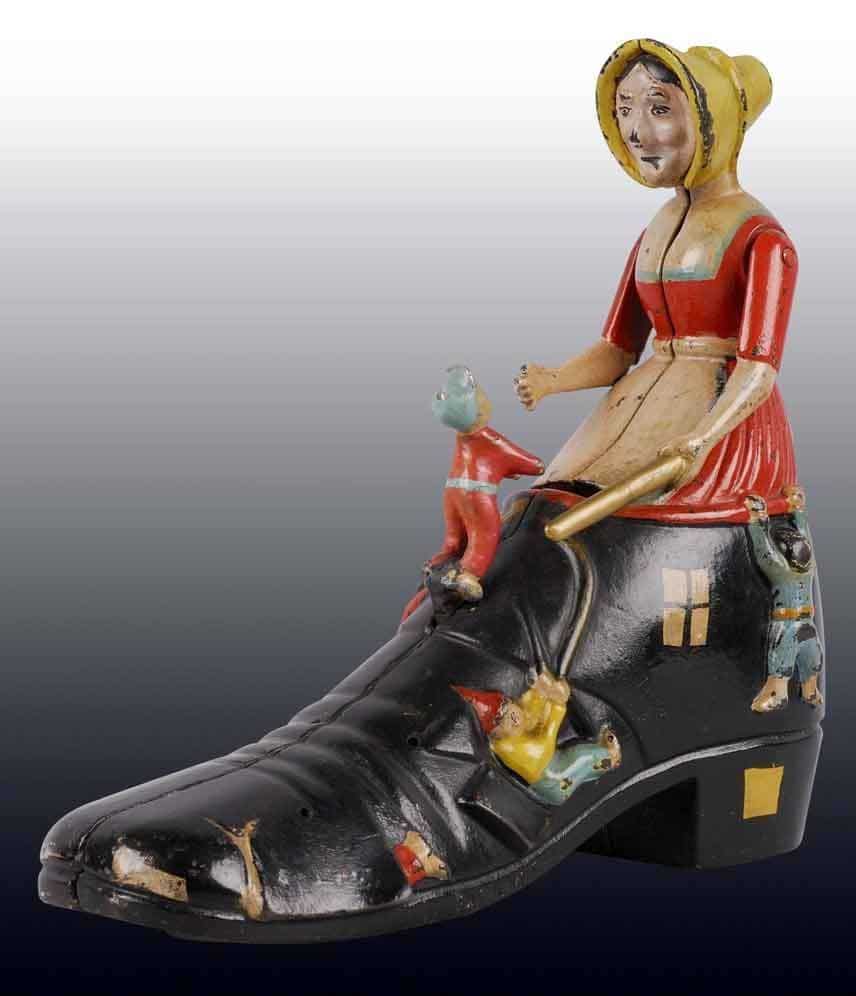
Condition
To best estimate the value of your cast iron toys, it’s worth giving them a preliminary condition status, according to the following guide:
- Mint Condition: Toy appears to be new, never played with, without paint chips or wear on the rubber decorative elements.
- Near Mint Condition: Toy appears to be near-new, rarely played with, with only minimal chips to the original paint or wear.
- Excellent Condition: Toy is complete but has been played with and so shows signs of minor wear and tear, though has been maintained excellently.
- Very Good Condition: Toy has been played with and shows general wear throughout with plenty of paint chipping and perhaps some minor rust.
- Good Condition: Toy displays evidence of heavy use, including paint chips, dents to the body, mild-to-moderate rust, and may also be incomplete or in need of repair.
- Poor Condition: Toy is very heavily used and damaged, with minimal original paint remaining, moderate-to-excessive rusting, and several missing parts.
There’s no exact price tag to put on a toy based on the condition alone, since the toy itself must then be assessed for rarity and desirability. However, it should be stated that the better the condition, the higher the price it shall fetch at auction.
Rarity
Combined with condition, the rarity of the cast iron toy determines its potential value. Some types of toys are rarer than others, or at least deemed more desirable, for example yellow cabs, motorcycles complete with riders, or themed pieces based on cartoons and comics.
Here are some examples of valuable cast iron antique toys:
- Arcade Cast Iron #211-R Red Baby International Harvester Dump Truck ($435)
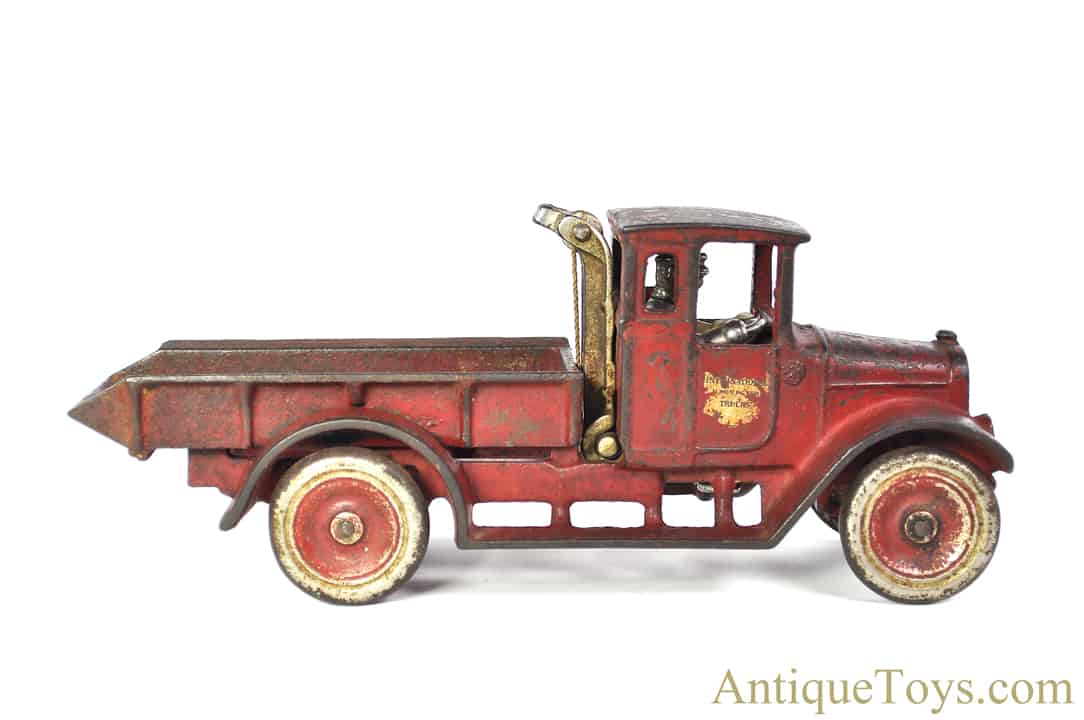
- Don Lewis Race Car #51 ($650)
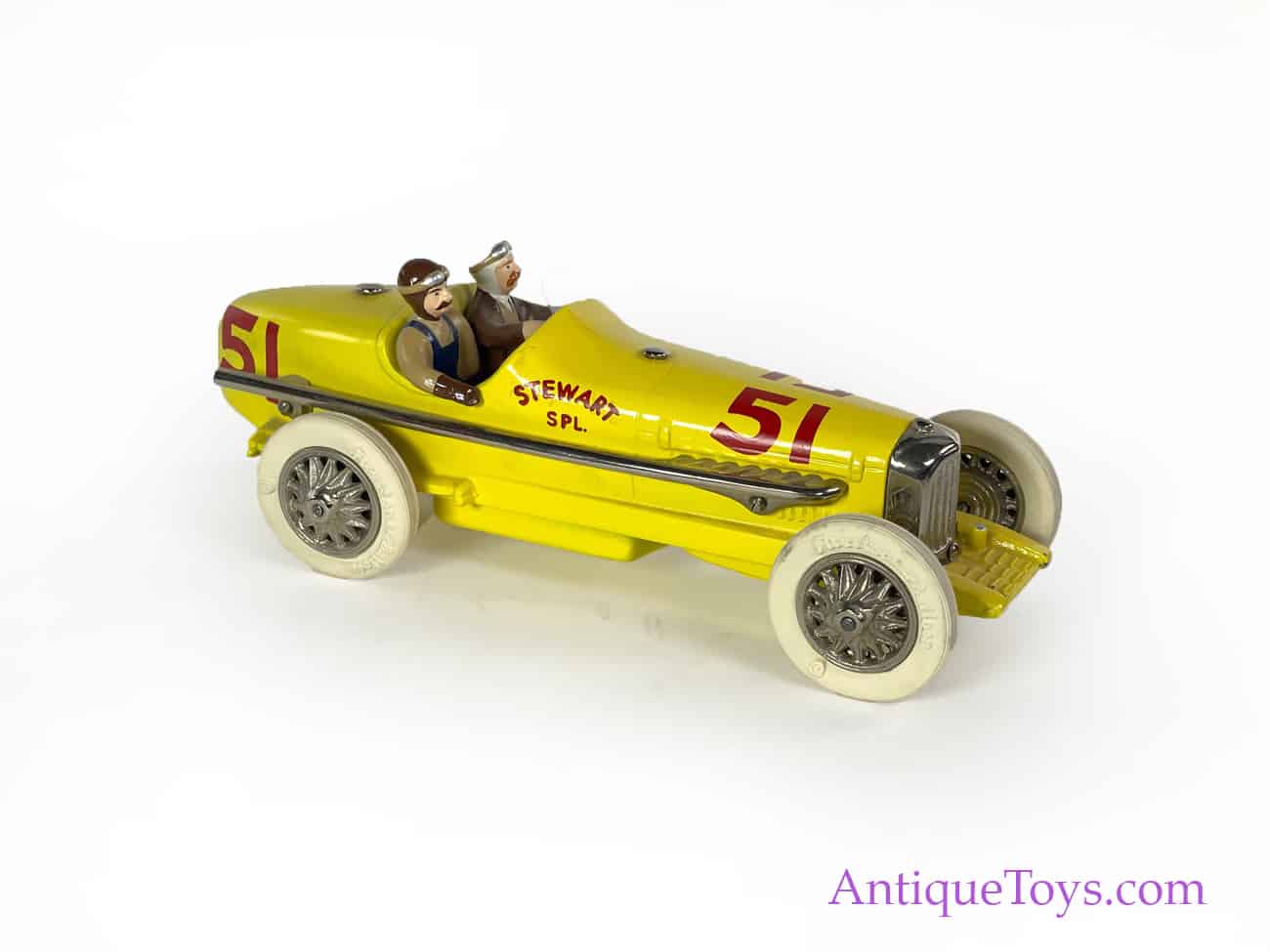
- Champion Hardware Co. Blue Cast Iron “Champion Express” Wagon Toy ($150)
Image Credit: antiquetoys - Arcade Yellow Cab ($20,000 in mint condition)
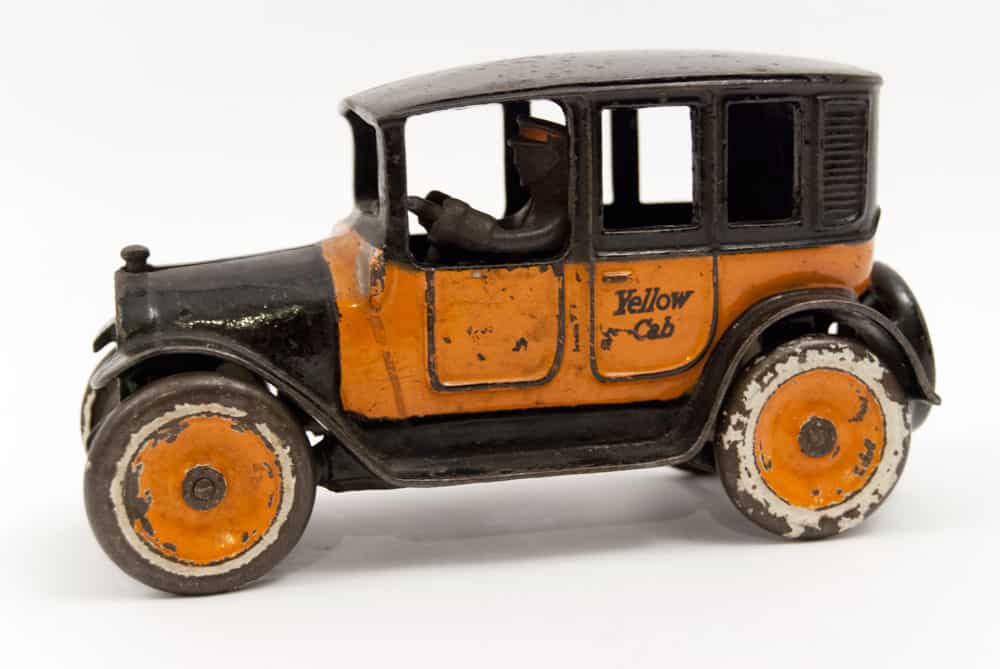
- Dent 1910 Hook-and-Ladder Fire Truck ($3,500)
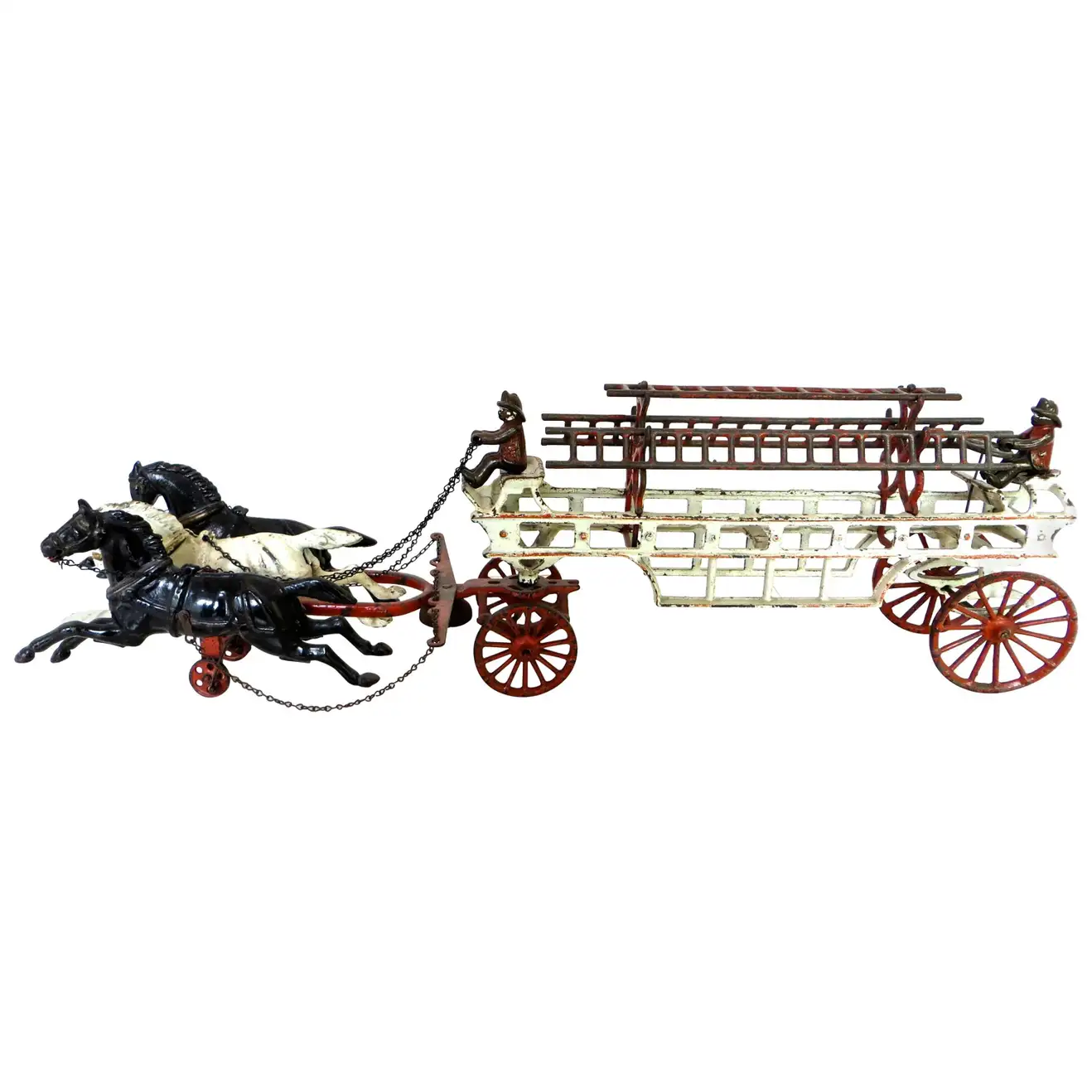
- Hubley 1930s Popeye the Sailor Motorcycle and Rider ($600)
Typically, the types of toys which sell best are the older ones, or the ones modeled after particularly beloved vehicles, or vehicles and machines unrecognisable in today’s modern world. For example, horse and cart toys are perpetually desirable, as are “working” imitations of old industrial revolution-era machines, such as ditch-digger toys and the like.
How to keep your antique cast iron toys clean and in sellable condition
Maintaining cast iron toys, especially genuine antique ones, is not always easy, especially if they’ve sat unloved or forgotten about for quite some time. Nevertheless, there are thankfully still things which you can do in order to keep them in the best condition possible.
- Gently brush loose paint flakes, rust and dirt from your toy using a stiff wire brush
- Spray a fine mist of lubricating oil over the toy to protect it from damage during step #3
- Use a fine-grit emery cloth in gentle circular rubbing motions to remove remaining rust
- Dip a soft cloth in white spirit and use it to gently clean the toy of the oil, dirt and rust
- Wrap your cast iron toy (newly cleaned) in newspaper and store it in a warm, dry place
- Leave your cast iron toy to completely dry out for several days to a week
- Store your dried and cleaned cast iron toy in an air-sealed display case
Conclusion
Many genuine antique cast iron toys have been lost to history, which is partly what makes surviving originals so highly sought-after, and thus valuable, today. Make sure to check the authenticity of your cast iron toy if you plan to sell it at auction, and keep it in as close-to-mint condition as you can if you hope to score a high price. Lastly, if you have any questions for us, don’t forget to comment below.
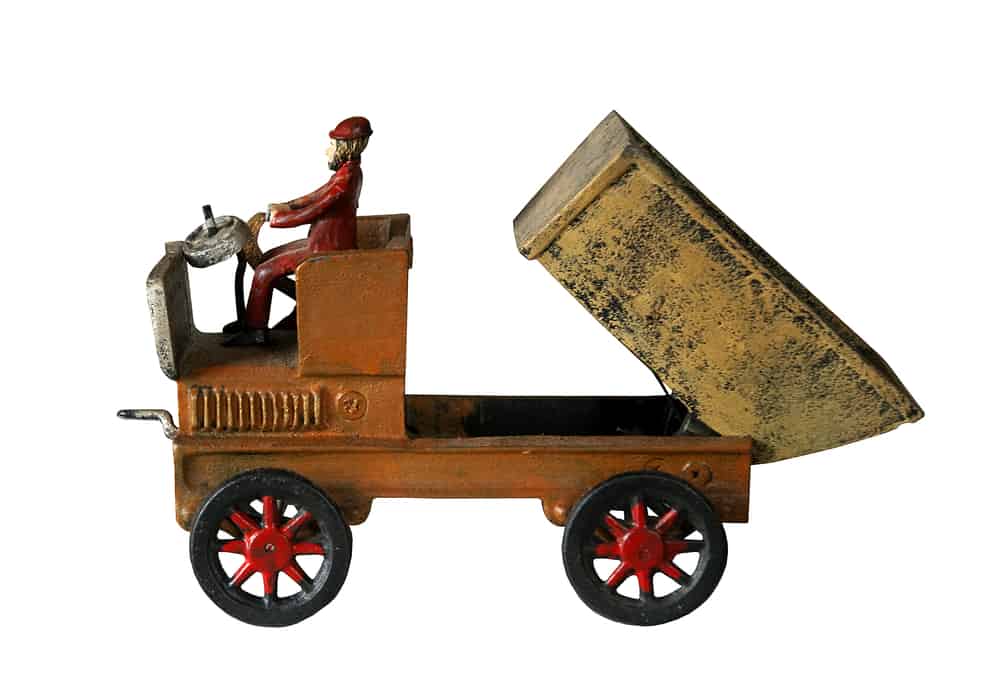
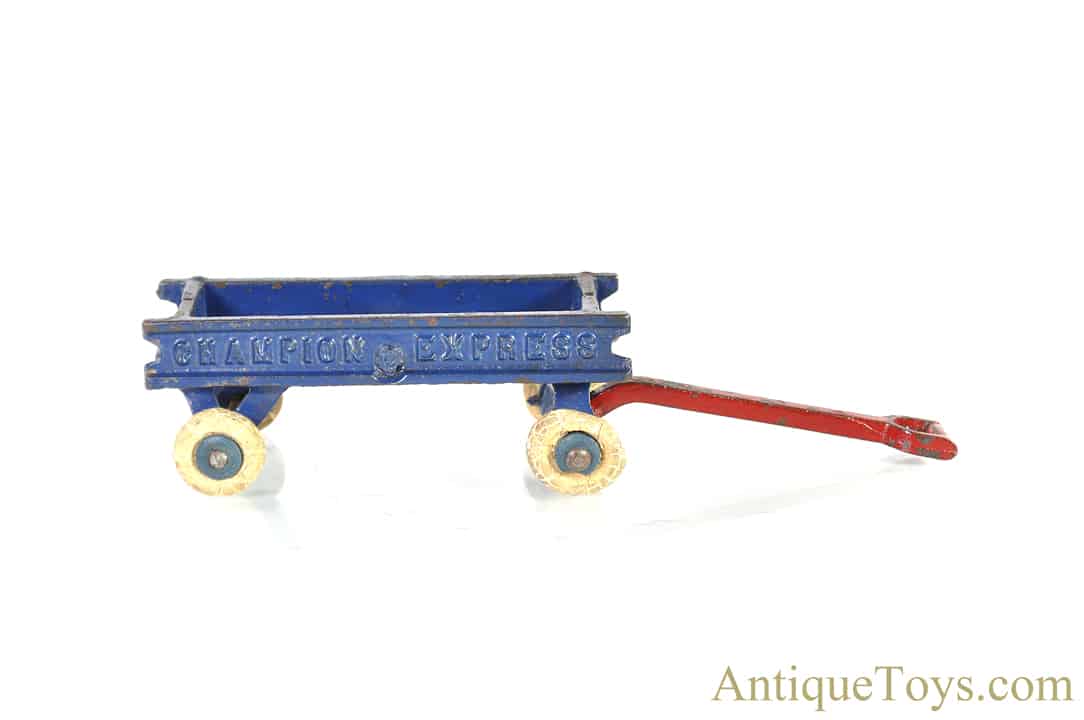
I have some cast iron motorcycles and drivers i would like to try and sell if i could send a pic to somebody who would know, i hope to hear from you I believe the most unusual piece i have is 2 removeable bikers with red headband and white ponytails? only found 1 on the internet and it was rusted out completely, mine are much better condition. thanks